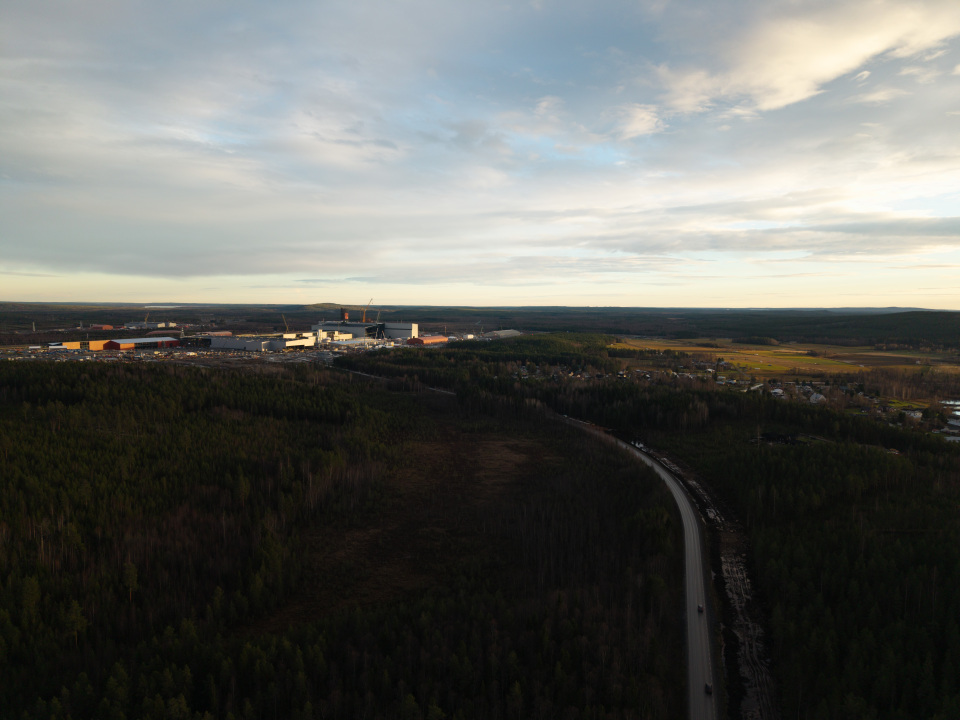Green steel is not just an environmental initiative – it’s the next major business opportunity. Right now, the world’s first large-scale green steel plant is being built in Boden.
At Boden Industrial Park, Europe’s most modern steel plant is currently emerging, where Stegra is preparing to transform an entire industry. One of the team members at Stegra behind the mission to shape the market for a completely new product is Julia Bramble, Head of Delivery and Business Process Optimization, with three decades of experience in the European steel industry.
“What used to be a sustainability goal has become a business strategy. Companies with high climate ambitions realize they have to reduce emissions throughout the entire value chain – and steel is one of the biggest pieces of that puzzle”, says Julia Bramble.
When the market changes from within
Steel is one of the most widely used materials in the world – from cars, buildings, and household appliances to energy systems and infrastructure. That also means traditional steelmaking has a huge carbon footprint. As major brands like Mercedes, and BMW now aim for net-zero emissions, the question of the origin of steel becomes central.
“For those already using renewable electricity, the next logical step is to choose green steel. For many, steel is the most cost-effective way to reduce emissions.”
Efterfrågan på grönt stål växer snabbt och överstiger redan den tillgängliga produktionen. Enligt en studie från Lunds universitet kan grönt stål bli konkurrenskraftigt i EU redan 2026, delvis tack vare unionens utsläppshandelssystem. De producenter som inte ställer om kommer successivt att betala mer för sina utsläpp – och det märks i priset på traditionellt stål.
– Oavsett om du gör något eller inte blir stålet dyrare. Skillnaden är att de som väljer grönt stål investerar i framtida konkurrenskraft, säger hon.

Two values in one product
Stegra will produce flat steel, steel delivered in large steel coils and then further processed into products within the automotive industry, construction sector, energy, and heavy transport.
“Our customers are essentially buying two things: the steel itself and the reduced carbon footprint. The two values are interconnected. For many companies, it’s a way to achieve their climate goals while strengthening their brand.”
Of the roughly 150 million tonnes of steel produced in Europe each year, flat steel is the largest category. According to Julia Bramble, all forecasts point to demand for green steel far outpacing supply over the next five years.
Stegra recently adjusted its timeline, meaning production will begin around the turn of 2026/2027.
“It’s not about flipping a switch and then we’re in full production. Over a fairly long period, we will need to verify quality and build up to produce volumes over time.”
A long but necessary value chain
Green steel production doesn’t just change how steel is made – it also reshapes the supply chain. The steel leaving Boden in the form of coils will continue to steel service centers, fabricators, and component manufacturers before becoming a finished product.
“The challenge is that everyone in the chain needs to understand the value of low emissions. It’s not enough for a car manufacturer to have ambitious climate goals – their suppliers and those processing the steel must also adapt their operations for the final product to be truly green.”
In traditional steel production, coal is used to separate oxygen from iron ore – resulting in carbon dioxide as a byproduct. In Boden, hydrogen is used instead, and the byproduct is water.
“By replacing coal with hydrogen, we remove the source of carbon emissions altogether.”

A community in motion
The establishment in Boden is about more than industry – it’s transforming an entire community.
New businesses are setting up, and existing ones are gaining more customers. This development extends beyond industrial suppliers to restaurants, shops, and services – everything that makes a city vibrant.
Julia Bramble has seen the same thing before. During her nine years at Tata Steel in IJmuiden, Netherlands, she experienced how a major industrial player can impact and create more jobs in the region.
“We used to talk about a multiplication effect. Around 9,000 people worked at the plant, but approximately another 20,000 in the surrounding area had jobs that existed because the steelworks was there – from suppliers to hairdressers and restaurants. It shows the power an industry can have when it becomes part of the community.”
A new market takes shape
For Julia Bramble, the mission is both challenging and inspiring: to create a market that does not yet exist.
“We are not just building a steel plant, we are building a new category of steel. There is an enormous willingness. And that’s what makes this work so exciting.”
When the first steel coils leave Boden, it marks not just the start of a new production – but the beginning of a new market.